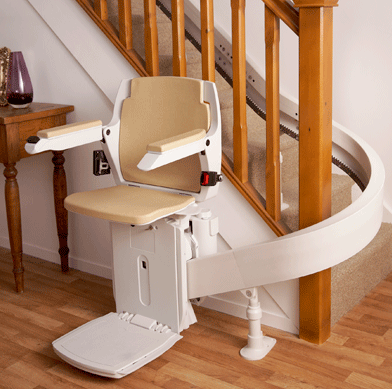Stairlifts are becoming more and more common in our society, especially because of the improved health care that allows us to live longer than previous generations. This also means the number of people that needs to use these services is increasing, both because of age and because of mobility-related issues; so stairlifts are suitable for a wide range of people – and in very different kinds of situations. You might find a stairlift in a public pool, for example, with the purpose of aiding in hydrotherapy sessions.
Before considering design, there are other factors to think about, like the type of stairlift you need and if it’s possible to have one installed in your premises in the first place.
A Stairlift Design for Every Occasion
Businesses are required to make reasonable adjustments to their buildings in order to remove any physical barriers that prevent access. Since stairs offer the greatest obstacles, adding a stairlift is the most viable option.
Since stairlifts are available for every possible purpose, taking time to research before choosing the right one for your building is the only way to ensure you get the most out of your product. These motorised devices can take several forms, the most common being curved, reconditioned, and heavy duty stairlifts.
Curved stairlifts are designed to travel up and around cornered staircases; this factor is especially important and shouldn’t be dismissed, because if you opt for a straight chair but have a curved staircase in the building, not everyone is able to climb the last couple of stairs. If the stairway has landings, corners or spirals, you should always get a curved stairlift.
Reconditioned stairlifts are the most affordable choice, seeing as they’re created by stripping down, cleaning and rebuilding existing chairs to form a new one. You can purchase a reconditioned chair in
straight or curved form, depending on your needs. Since they’re created from different chairs, they should always come with a guarantee that covers all the parts.
Finally, heavy duty stairlifts have bariatric purposes, so beyond being durable and safe, they’re also fitted for users over 23 stone.

The Technicalities
All stairlifts should go beyond the staircase at the bottom of the stairs. If the front door is too close, you might need to get a hinge track, which will send the chair back as soon as you dismount it. Some stairlifts are designed to carry wheelchair users. They have a platform that is large enough for the wheelchair and edge flaps that prevent it from rolling off – they can also turn into a ramp to provide an easy exit.
Stairlifts usually have cut-out switches to ensure nothing goes wrong if the power goes out. People of all ages can use stairlifts, though children need a special car seat and a seat belt. Many chairs even come with a key, so that only you can use it.
Most buildings allow for the installation of a stairlift, but if your staircase is too narrow, you may not be able to have one. Your stairwell should be at least 75cm in width. If you’re not sure of the dimensions, try to fit a normal chair at the bottom of the stairs, with the back to the wall; sit as far back as you can. This should give you an idea of how much space you have left and if it’s feasible to have a stairlift installed.

Is Design Really That Important?
Besides choosing the stairlift that best suits your premises, it’s also important to consider its design. Stairlifts can be integrated into your stairway in a subtle and fashionable manner, and their installation should always be performed without any damage or scuffing to the walls or the stairs in your building.
Stairlifts come in a variety of shapes and forms. For example, you can opt for a chair with more luxurious upholstery, and even that comes in different colours that can match every design scheme. You even have a choice in regards to the rails. You can choose between several materials (and colours), including ones that add a modern touch to your premises, and you can also opt for a specific rail design, like a honeycomb pattern, for example.
You might wonder if you’ll have to modify the wall to install a stairlift. However, there’s no need to refurbish your building because the chair will not be attached to the wall, but to the stairs. When the stairlift is removed, and the carpet cleaned, it’s impossible to say that it was even there in the first place.
The colour and design of a stairlift is usually dictated by the combination of current decor and budget, but also if the business owner would like the stairlift to be out of sight when it’s not being used – this could be because of aesthetic reasons or to keep stairways clear.
While it’s extremely important for businesses to adhere to the Disability Discrimination Act 1995 and provide equal access to everyone, they don’t need to concede on the existing decor. With such a variety of designs to choose from, it’s likely that you can find a style that won’t clash with the interior design of your building – so modifying your design scheme won’t be necessary.
So even though the technical aspects are extremely important while purchasing a stairlift, design matters.
With over 15 years industry experience of supplying and installing stairlift systems, ALS Stairlifts deliver professional and bespoke accessibility solutions to address a range of needs. For durable and versatile reconditioned, heavy duty or curved stairlifts from ALS Stairlifts you can contact their friendly team on 0800 046 3438 or via email at info@stairlifts.uk.net.
